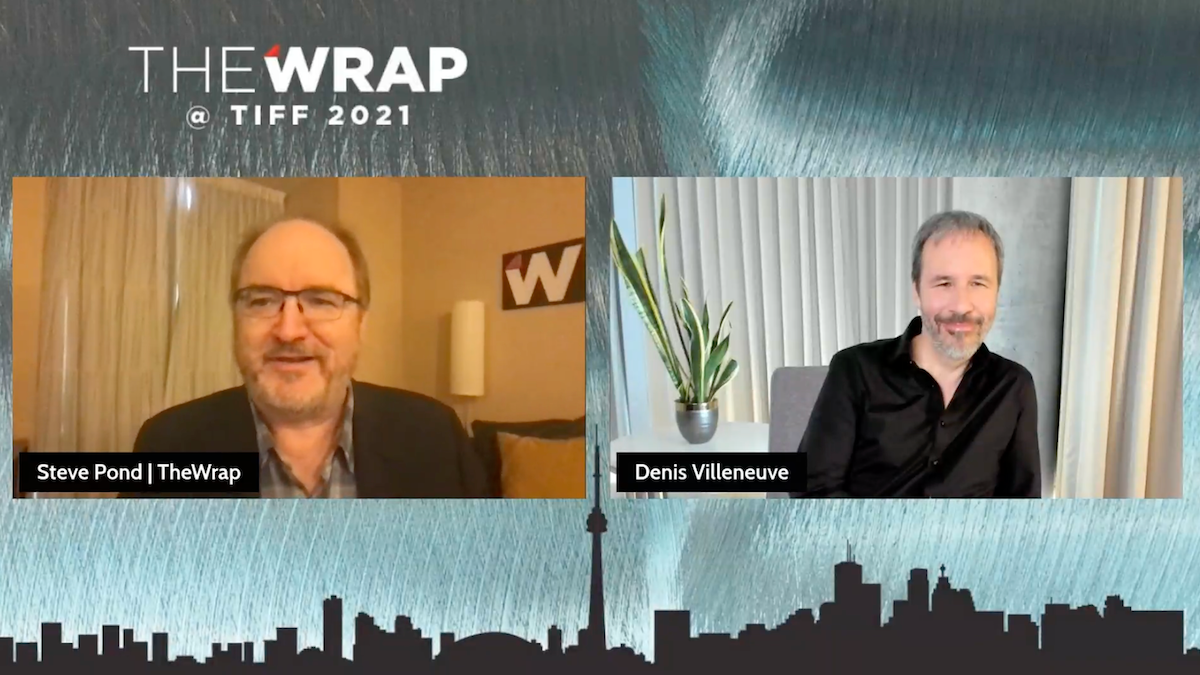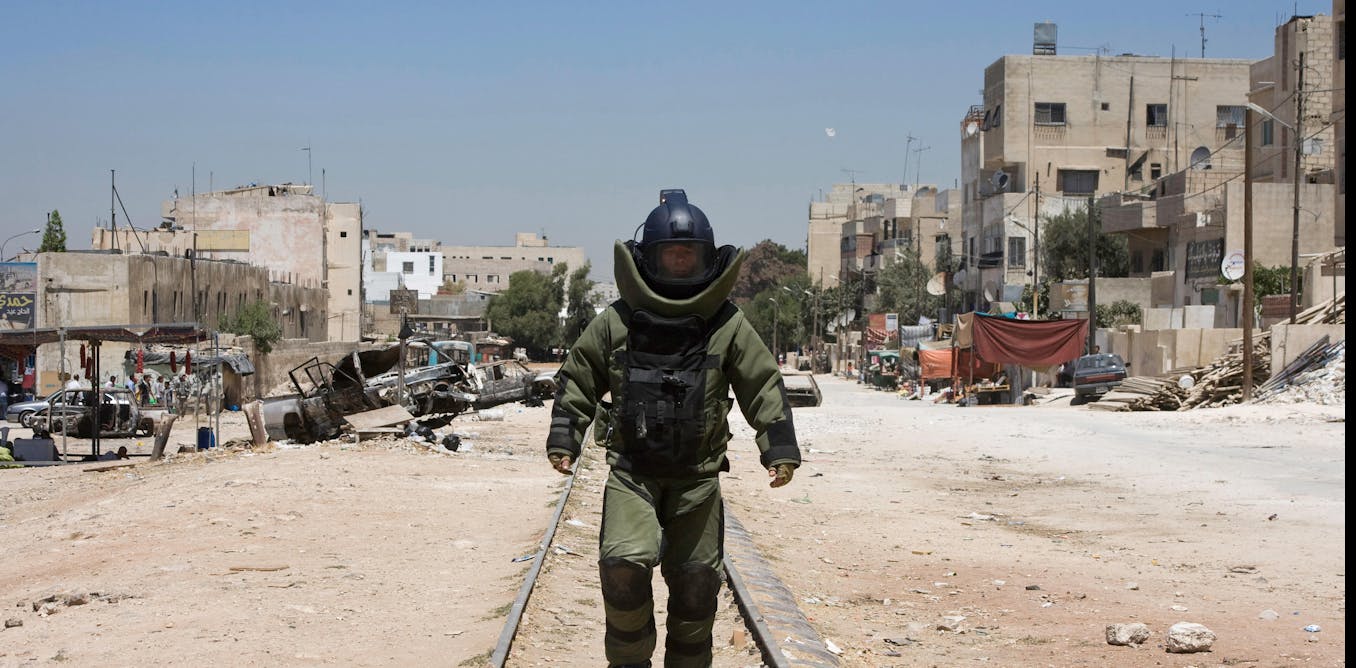Ernest Em Shows you how to Dramatize Portraits Using Simple Prisms
10 min read
Table of Contents
We’re streaming daily on Apple Podcasts, Google Podcasts, Stitcher, Pocket Casts, and Spotify! You can also listen to it right here on The Phoblographer.
“When you practice something for a long time, you have to ask yourself why it works that way”, says Ernest Em about his left-field techniques. Also going by the moniker 19Tones, Em creates his portraits using glass prisms. We love how he thinks outside the box. Having that creative vision allows him to deliver images that veer away from the standard portrait, making it much more compelling for the viewer. Peeking behind the curtain, Em shares the creative journey behind his work.
Want to get your work featured? Here’s how to do it!
Glass balls, prisms and related photography accessories – things that I’ve never really tried using because I felt they were gimmicky. A bit of randomness in your images can always add some unexpected flares and the like, but to me, they always felt like something you’d try when you ran out of ideas. Then I came across Ernest and his 19Tones portfolio. Wow, this photographer creates some stunning work with prisms. This isn’t randomness; his work is organized and well scripted. Ernest has developed a signature style using these prisms; each Prismagraph image is planned and executed meticulously.
The Essential Photo Gear Used by Ernest Em
Ernest told us:
The main criteria for choosing camera gear for me is the quality, the weight and working speed. But recently, there is a thing I’m really worried about — the recent new lenses from Sony does images looking very soft according to social media trends. Therefore, I’ve been thinking to change my lenses. I would advise you to change them occasionally, to try new things and to experiment much more.
The Phoblographer: Please tell us about yourself. How did you get into photography?
Ernest Em: I go by the professional name 19TONES, also known as Ernest Em. I’m 28 years old; I’m Korean by origin, but I was born in Russia, and I’ve lived in Moscow all my life.
After graduating from the Bauman Moscow State University in 2015, I bought my first digital camera because I wanted to improve the quality of my night shots. I’ve never worked in my profession. My journey into adulthood began immediately with the camera. And I never took any photography workshops or any courses. Always learn on my own.
My work, inspired by neon and futuristic aesthetics, is dedicated to Urban Exploration & Portrait photography since 2015. I created 19TONES in 2016 as both a persona and an artistic mindset. In the meantime, I created the term “Prismagraphy” in early 2019, even though I’d been practicing prismatic portraits since 2017.
19TONES’s work explores familiar places in unfamiliar light & color and the feelings that arise from that reality through photography. Think of it as a tool for self-expression to rethink and transform reality. In photography, I prefer an analog approach, to shoot live with no CGI.

The Phoblographer: Prismagraphy – self explanatory title, but tell us what led to the creation of the first image in this series?
Ernest Em: I created it because such portraits had become a large part of my art. I started using this technique in 2017, and for a year, I’d been experimenting with it. I knew that photographers used a standard triangular prism to get some flares, rainbow effect or to blur an image, but it didn’t make any sense personally for me as a photo artist. That just looks pretty, and that’s it — not enough.
I started to experiment with the refraction of light and the reflection of different subjects that are around a model, for example. When you practice something for a long time, you have to ask yourself why it works that way and how it works — and I did ask myself. Then I faced Newton’s theory of light when a beam of white light passing through two prisms, which were held at such an angle that it split into a spectrum when passing through the first prism and was recomposed, back into white light, by the second prism.
The technique and the term Prismagraphy are based on the refraction of light which is a physical phenomenon. In this case, you can get extra dimensions in 2D with a completely analog approach that makes each photo so unique. Shot live with no CGI. Prismagraphy transgresses “the boundaries between the imaginary and real”, toying with audience perception, it presents familiar places and subjects in an unfamiliar medium.

The Phoblographer: What’s been the response to some of the commercial work you’ve done with this technique?
Ernest Em: The audience really enjoyed it! Because it’s always been a challenge for me.
When you take something unpopular, unrecognized, underrated, and then work with it for a long time transforming it into large projects, shoots, it’s always awesome. It just becomes your life, and you tell people about it sincerely. Let’s say that you push boundaries in art and commercial work for independent artists.

The Phoblographer: Is it mostly about creating art with unpredictable results, or do you usually have a clear concept in mind when heading out for these images.
Ernest Em: That’s a good question. In order to understand the value of Prismagraphy, it’s very important to emphasize definite features of it. As we said above, that’s a physical phenomenon which means that you can not undo your actions during the shoot. That’s still photography. There’s no Photoshop or CGI. It’s impossible to repeat the exact result. Too many conditions have to come together in order to do it.
I think that art is always about taking experiments. If you can know the result, then it’s about the craft.
You can predict some elements in Prismagraphy depending on what you use for a shoot. For example, if you use a neon sign, you know that you could get some different shapes, forms or tittles of neon in your frame. Also, if you use a triangular prism, you get one result; if you use a couple of triangular prisms or just a prism with a different shape, then you get another result.
Based on goals or a brief, you start planning a shoot and predict it, let’s say, by 50 per cent. The rest is unpredictable because there are a lot of constantly changing conditions such as the lens, the camera, the angle, the subjects around a model, the time of day, the light, and much more. Even so, it’s still possible to do good projects. If you represent a brand or company which are interested in such kind of art, then work with me as an artist.
Commercial Creative Project / “MADE FOR” Bulleit:
For this project, I developed a creative concept with neon branded signs. https://19tones.com/Made-For-Bulleit
Artist’s story and his mural. Impromptu shooting: https://19tones.com/Pokras-Lampas-Cosmonautics-Day-Korolev

The Phoblographer: What is the order of precedence here – lights, subject, reflections, refractions – when you consider what goes into the making of each of these images?
Ernest Em: The lights are very important for every photographer.
I prefer to work with neon or/and projector light at night. The darker it is, the brighter neon and projector lights are.
But sometimes, I just take portraits on the streets without neon or projector light. In that case, I usually go where there are interesting luminous objects. It may be a gas station, a light installation in the city, a storefront, or it may happen in the subway, for example.

The Phoblographer: Do you aim to get most of these results in-camera as much as possible? Typically how much production goes into the setup for some of the more complex images
Ernest Em: I always do. That’s exactly how it works. In the rarest of cases, you can fix a reflection or background on post-production, but it’s normal for every photographer who works professionally.
If we consider a complex project with 10 neon portraits, it can take a month. You usually need to order a neon sign, control the quality of it, then you need to scout locations and move around the city with the neon sign and your team. The process takes around 3 weeks, from creating the neon sign to having portraits on post-production.

Most photographers prefer standard photography lenses for taking portraits as 35mm, 50mm or 85mm. But I decided to take portraits with a wide-angle lens, the 24mm f/1.4. It makes my portrait photography more atmospheric getting more details in to it than ever. But it takes time to learn how to shoot with that lens. The 55mm f/1.8 is what I use very seldom, to be honest, since I have the 24mm f/1.4.
The Phoblographer: From where do you draw inspiration for creating your next prismagraphy idea?
Ernest Em: In my opinion, to be inspired in the right direction, you have to be inspired not by photographers or photography but by other mediums. I usually try not to follow photographers, so I don’t borrow ideas. I’m used to rethinking things. A person’s story is more important to me. Then, of course, it’s movies and music, artists from another medium.

The Phoblographer: You’ve done some creative collaborations with other artists. Which were the ones that garnered the best feedback for you?
Ernest Em: I think that one of the best is the TRIPTYCH “DĪSPĘRSĪØN (øptics)” I made in collaboration with L-Bank.
If we consider partnerships too, then I would call the project on Porsche Taycan. In that project, two photographers have participated, the concept is common, but photographs are taken by individuals.

The Phoblographer: Is the shift nowadays towards creating more prismagraphy during night more than during the day?
Ernest Em: Definitely, yes.
‘Prismagraphy’ is a term I’ve created for photographs taken with prismatic glass because it’s a large part of my art. It’s very important to see a video of shooting process.
Prismagraphy is a kind of analog photography based on refraction of light. It’s like an interactive experience of a real-world environment. It’s as if they are enhanced by photoshop-generated perceptual information, but it’s not the case. You literally use different prismatic & reflective materials to get a complex image. Those materials refracting the light are your paint and a brush. You paint before you do post-production

The Phoblographer: Have you considered converting some of these into animated NFTs? Do you think they’re just a fad, or are there here to stay?
Ernest Em: Yes, I have. I already did it with a couple of portraits. I created the collection called “Kaleidoscopes”. It includes several animated portraits that based on the refraction of light and the phenomenon of dispersion (in optics). Two approaches to image processing are considered, both analog and digital — this engenders dualism and combines the techniques in one piece of art. The collection is represented on https://knownorigin.io/19tones.
Like all art, prismagraphy is subjective. All I know right now is that I am going to keep creating Prismagraphy portraits. We all need to become independent artists as much as we can.

The Phoblographer: The randomness of the lights and the reflections can produce some vivid results, but what is that key factor which makes you satisfied with the result after a click?
Ernest Em: That’s when I see that I have worked with space out of my camera too. I mean that when you successfully add something that your camera doesn’t see. I call it “The desire to escape from 2D”. It means that reality is transformed enough.

All images supplied by Ernest Em. Used with permission. Please visit his website, Instagram, Behance and Youtube pages to see more of his work





